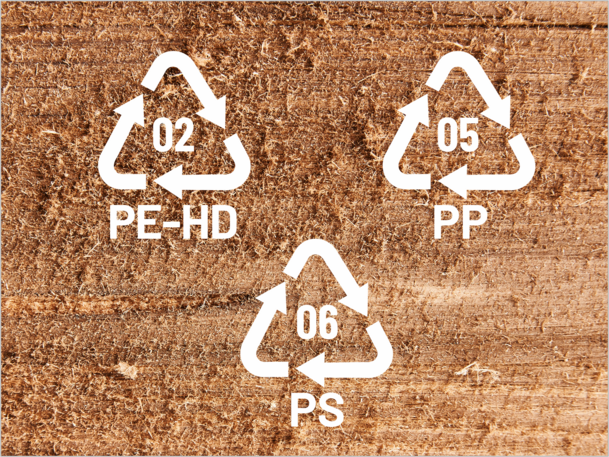Thermoplastic Polyolefin Composites
Global Production Situation of Polyolefins
Thermoplastics are abundantly used in most parts of human life.
Among them, the polyolefins based thermoplastics comprise the dominant materials group by market share, with polyethylene (PE) already accounting for over 25% in 2021. Also part of this material group are polypropylene (PP) and polystyrene (PS), to name then most prominent ones. Together, they comprise the bulk of thermoplastic polyolefins on the world market.
Their versatility, toughness and chemical resistance make them highly popular in many applications.
Hence, it is no surprise that the thermoplastic polyolefin market is projected to grow nearly double digits annually in the coming years. materials is possible. The soaring global consumption is however, accompanied by rising concerns about plastic pollution and requests for closed production-use-end of life cycles. In order to reduce the impact of rising polyolefin littering of the environment, several ideas are on the rise.
One approach is, to substitute fossil-based polyolefins through bio-sourced polyolefins with the same properties, often called 'drop-in' materials. The synthesis from bio-feedstock is much more costly but as the costs for CO2 emissions increase, such business models gain track.
Another path is, to use bioplastics like PHAs, PBS, TPS and many more to develop blends matching polyolefin performance.
Lastly, I want to highlight the way of designing natural fiber composites with high fiber loading to reduce CO2 impact. With the adequate combination of fiber, matrix, additives and equipment, a large variety of materials is possible.
Natural Fiber Composites - What Is Possible?
Certain intrinsic limitations are set when using natural fibers. Without prior drying, during the compounding step, degassing is very important. This can be done with atmospheric degassing stations, but preferably with vacuum stations, where the water vapor is sucked out. Overall, wood particles and cellulose fibers should be added on the last possible moment into the compound.
For example, using a side feeder helps to reduce the dwelling time of the fibers in the extruder, and minimizes the risk of degradation and fiber breakage. On the other hand, good mixing is vital to ensure complete dispersion and prevent agglomerates, which negatively impact mechanical properties. Here, a special focus on screw design is needed.
Lastly, cellulosic materials start to degrade between 200°C - 220°C, which rules out some materials like polyamide or PET to be used as matrices.

Now, What About the Described Polyolefins?
Neat polypropylene melts at 160 °C, therefore PP-composites are used in manifold applications like car interior, furniture, house appliances, fencing and more. Fiber loadings of >70% are possible in extrusion, but with injection molding lower filling of 20-40% is common. Polyethylene, the most produced plastic on earth, melts between 115-135 °C, depending on its molecular weight. Its low-cost, favorable mechanical and chemical resistance and versatility make it an excellent matrix for natural fiber composites. Like PP it is used in various applications with fiber loadings from 10% to over 70%.
Things get more complicated with the third prominent polyolefin, namely polystyrene. Here, depending on the side chain orientation of the polymers, melting points are different. Highest and middle order PS melt at 270 °C and 240 °C respectively. Hence, they only can be used as composite matrices via dissolution in organic solvents. Lowest order PS however, is an amorphous polymer and appears to have no melting point, only a glass transition temperature. This one and PS-copolymers are readily available for composite formulation.
Application Trends
One of the main drivers of polyolefin-natural fiber composites is certainly the automotive industry.
Especially Japanese car manufacturers like Toyota have set high goals in reducing usage of fossil materials wherever possible. Another big market motor is the building & construction industry, where plant based fibers are used for example in noise barriers for streets or balcony cladding.
Then, also, more and more cellulose is combined with polyolefins, mostly for high quality products in households, where a white color is preferable.









